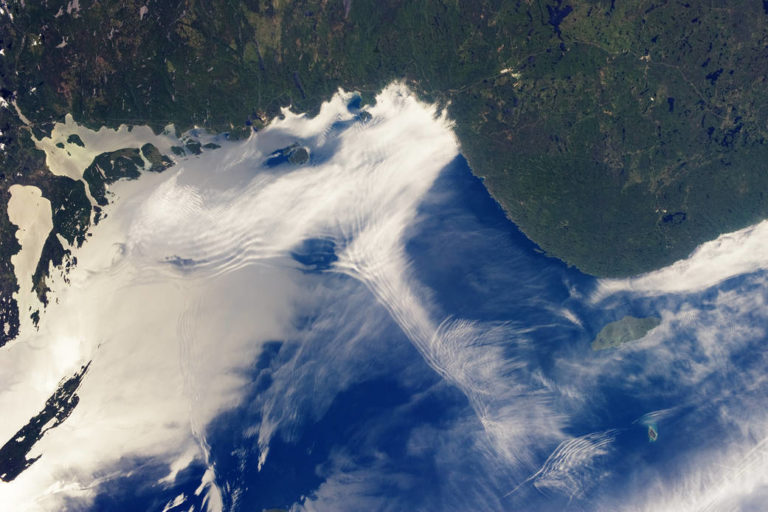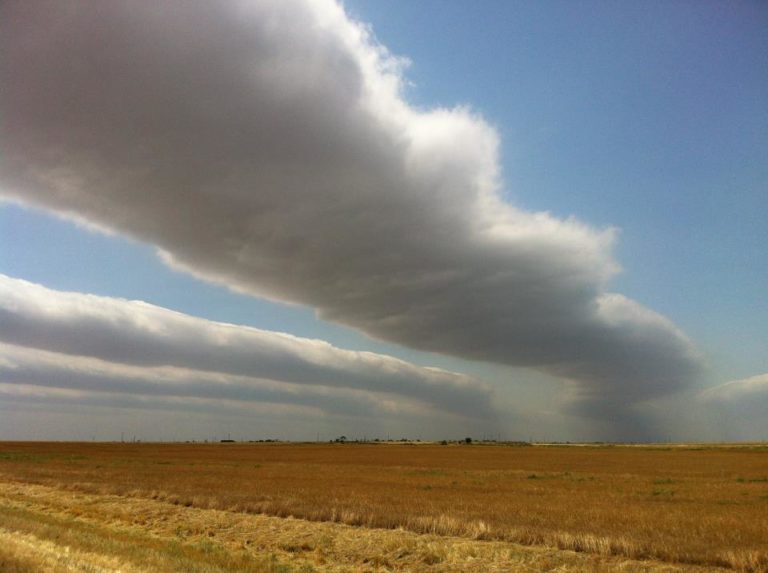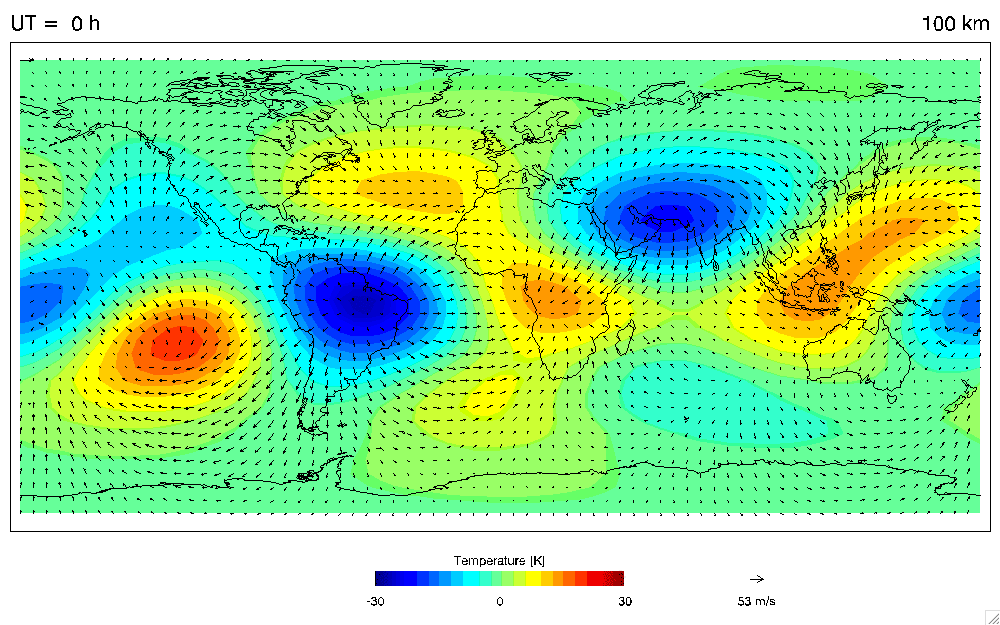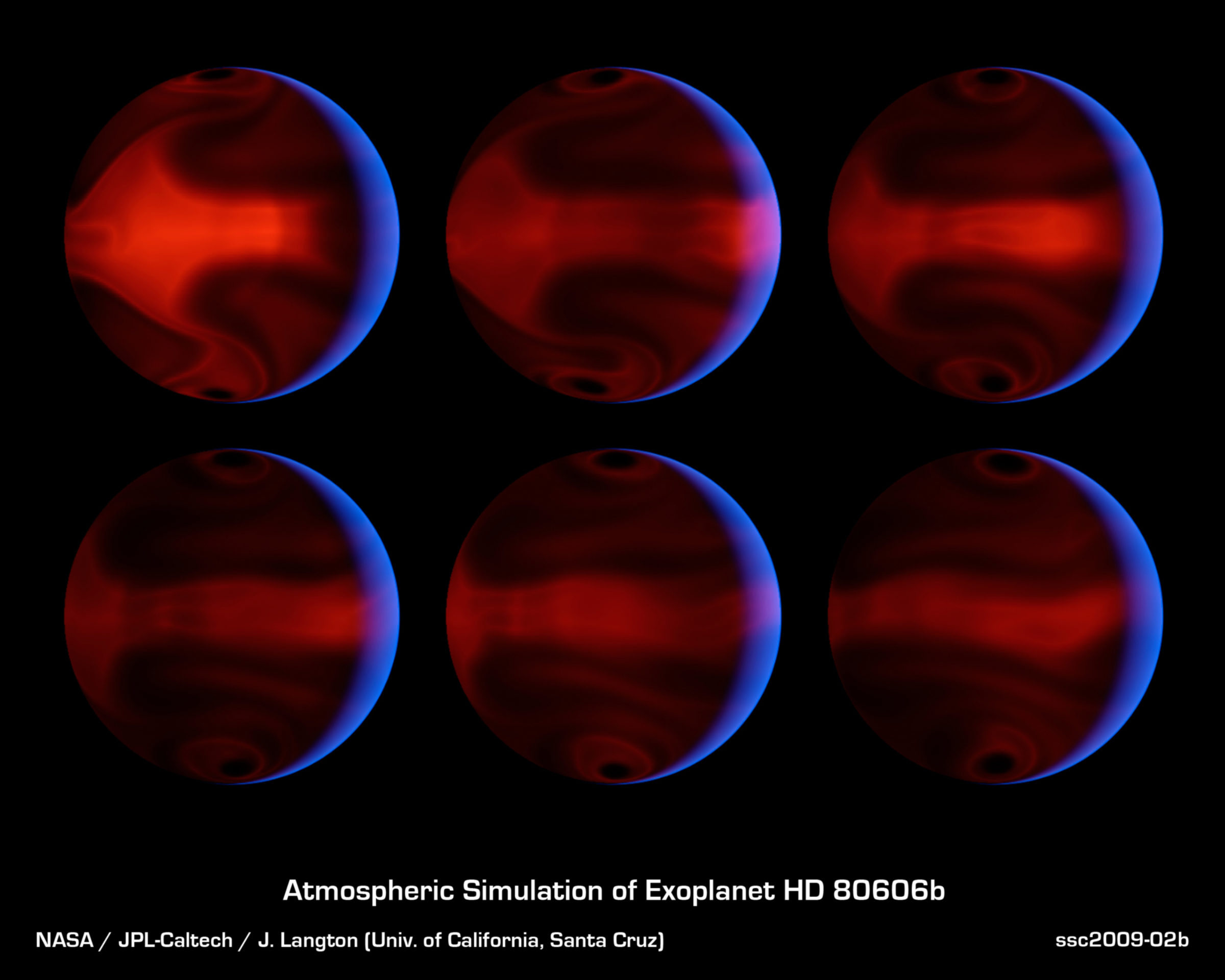Anna Scott • Apr 20, 2016
Atmospheric Waves Awareness: An Explainer
Yesterday, the Venus Express mission announced the observation of planetary waves in Venus' polar atmosphere. Following is an explainer on planetary waves, gravity waves, and atmospheric tides. --Ed.
Atmospheres are full of waves. Some, like sound waves, are abundantly clear to our ears (especially near a college dormitory on a Saturday night). Some of the most powerful waves propagating through atmospheres, however, are silent and invisible. Even worse is the fact that these poor waves are under-appreciated by everyone from Google to that one engineering colleague who thought that I made them up. These atmospheric waves are big, having wavelengths ranging from meters and kilometers (gravity waves) to thousands of kilometers (planetary waves). Their effects on the climate system and energy budget of a planet are both tremendous and varied: Europe's temperate climate (at least, compared to the USA’s East Coast), the replenishment of the ozone hole, and the hexagon at Saturn’s pole are all caused by these waves. Today I'll go over two types of waves that are critically important on Earth and other planets: gravity waves and planetary waves.
A time lapse of gravity waves in Iowa passing through an atmosphere. Credit: Iowa Environmental Mesonet Webcam


It’s important to clarify that atmospheric or oceanic gravity waves are not to be confused with gravitational waves, the outward propagating perturbations in spacetime that are associated with cool physics graphics and, apparently, any and all Google searches on either subject. Unlike gravitational waves, gravity waves are compressional waves in an atmosphere. They occur when a parcel of air gets bumped to aregion of different density, and the force of gravity pushes it back. This results in a propagating oscillation which we perceive as a wave. Most of the time you can’t actually see gravity waves, because a passing wave compresses and then decompresses the air, much like a wave moving on a slinky. Compressed air looks the same to human eyes as decompressed air, so a better analogy might be an invisible slinky. This is the same mechanism as sound wave propagation in the air. Sometimes we get lucky, and the compression of air results in cloud formation, because compressing air that is relatively humid results in condensation. But more often, especially in dry areas, the process of wave propagation is invisible. Clear-air turbulence, the bumps we feel on planes, is often the result of gravity waves breaking.
Planetary waves are different from gravity waves. Planetary waves are propagated by the rotational forces of the Earth, rather than gravity. Planetary waves occur when a parcel of air gets bumped to a region with a different rotational speed and the Coriolis force pushes it back. As such, gravity waves can propagate vertically and horizontally, whereas planetary waves only propagate along meridians of longitude.
Just like ocean waves, gravity waves and planetary waves don’t transport air across long distances. Rather, they push air molecules together and then apart. This results in little net movement but a lot of transfer of energy, much in the way that participating in ‘the Wave’ at a baseball game results in mild exercise and good cheer but at the end, everyone is still in the seat they paid for. This energy transport plays an important role in global weather, because gravity waves and planetary waves are able to push energy to regions of the atmosphere that don't receive a lot of solar or thermal energy.
So what do these things do? Planetary waves are responsible for most weather on Earth. At mid-latitudes (between the subtropics and polar regions), a Rossby wave manifests itself as meanders in the jet stream, which then spin off to form the high and low pressure systems that we experience as weather. In the tropics, equatorial waves control precipitation by interacting with the convection cells over the oceans known as the Walker Circulation. This produces something known as the Madden Julien Oscillation, which can either bring bountiful rains or wreak havoc on East Africa and Indonesia. In either a cruel twist of fate or an argument for international agriculture markets, the result is reversed for each region so that bountiful conditions in East Africa mean ruinous conditions for Indonesia, and vice versa.
Upwards moving gravity waves have fewer direct consequences on humans, but grow more important in the upper atmosphere. As they move away from the surface, the amplitude of the waves must grow to conserve energy in the thinning air. These waves grow in amplitude with increasing altitude above the surface until they "break", just like waves at the beach. This wave breaking releases large amounts of energy into the atmosphere. In particular, it drives the circulation of the stratosphere. This controls everything from where ozone is located -- while it is produced in the tropics, it ends up at the poles -- to whether or not the polar vortex stays together. In a sense, gravity waves allow the bottom of the atmosphere to communicate with the top, by transmitting momentum and energy from the surface without moving air masses.

Other types of atmospheric waves exist, and any world with a dense atmosphere such as Jupiter or Titan is home to waves (sorry asteroids, no fun for you). You've heard of tides in the ocean, right? Atmospheres have tides, too. Atmospheric tides are a type of wave caused by either gravitational forces or solar heating which, like ocean tides, have a signal that occurs daily as well as possibly twice or four times daily. On Earth, atmospheric tides are seen far away from the surface in what we call the middle and upper atmosphere, defined as the mesosphere and above, above an altitude of 50 kilometers. We observe atmospheric tides as diurnal disturbances in pressure fields, caused by thermal forcing rather than gravitational pull from celestial bodies. Thermal atmospheric tides are well theorized, studied, modeled, and measured on other planets and moons. From data taken by the Huygens probe, we have measured atmospheric tides in Titan’s upper atmosphere, and from the Mars Climate Sounder, we have observed Mars' semidiurnal tide. These waves can cause large variations in atmospheric density in regions where engineers would typically rely on atmospheric braking to slow down vehicles. Understanding the range and frequency of these perturbations is then critically important to preventing your spacecraft from crashing into the ground.
One last type of wave that normally remains the domain of action movies: shock waves. Shock waves only occur naturally on Earth when comets or airplanes break the sound barrier, and rarely during explosions, but we may be seeing them on exoplanet HD80606b. Though physical confirmation is limited to using climate models, extreme heat swings are theorized to result from a shock wave traveling around the planet.

Oh, and those examples from the beginning of the article? The bend in the jet stream that keeps Europe more temperate than the US is caused by a planetary wave called a Rossby wave, the replenishment of ozone to the poles is caused by gravity wave-driven circulation, and the hexagon at Saturn's pole is caused by a standing planetary wave.
Further reading:
Mysterious tides in the Martian atmosphere
Planetary Radio Q and A: Saturn's Hexagon
Saturn's hexagon recreated in the laboratory
Solar Semidiurnal Tide in the Dusty Atmosphere of Mars (worth reading even for only the introduction section, which does a great job explaining atmospheric tides on Mars and other terrestrial planets) (paywall)
Gravitational tides in Titan's upper atmosphere (paywall)
In situ measurements of the physical characteristics of Titan's environment
Support our core enterprises
Your support powers our mission to explore worlds, find life, and defend Earth. You make all the difference when you make a gift. Give today!
Donate

 Explore Worlds
Explore Worlds Find Life
Find Life Defend Earth
Defend Earth

